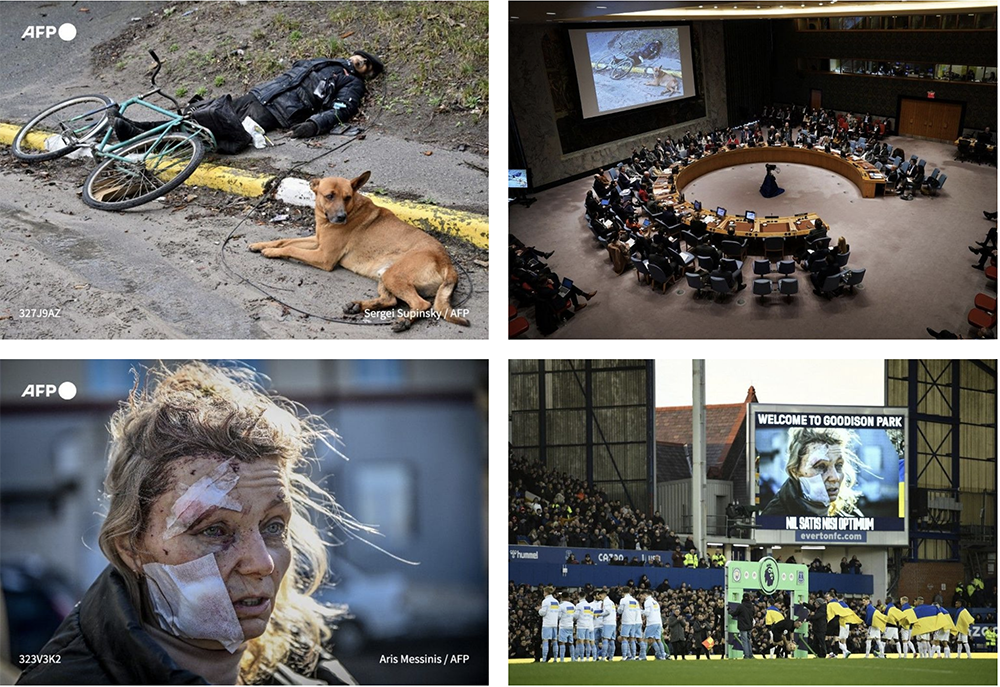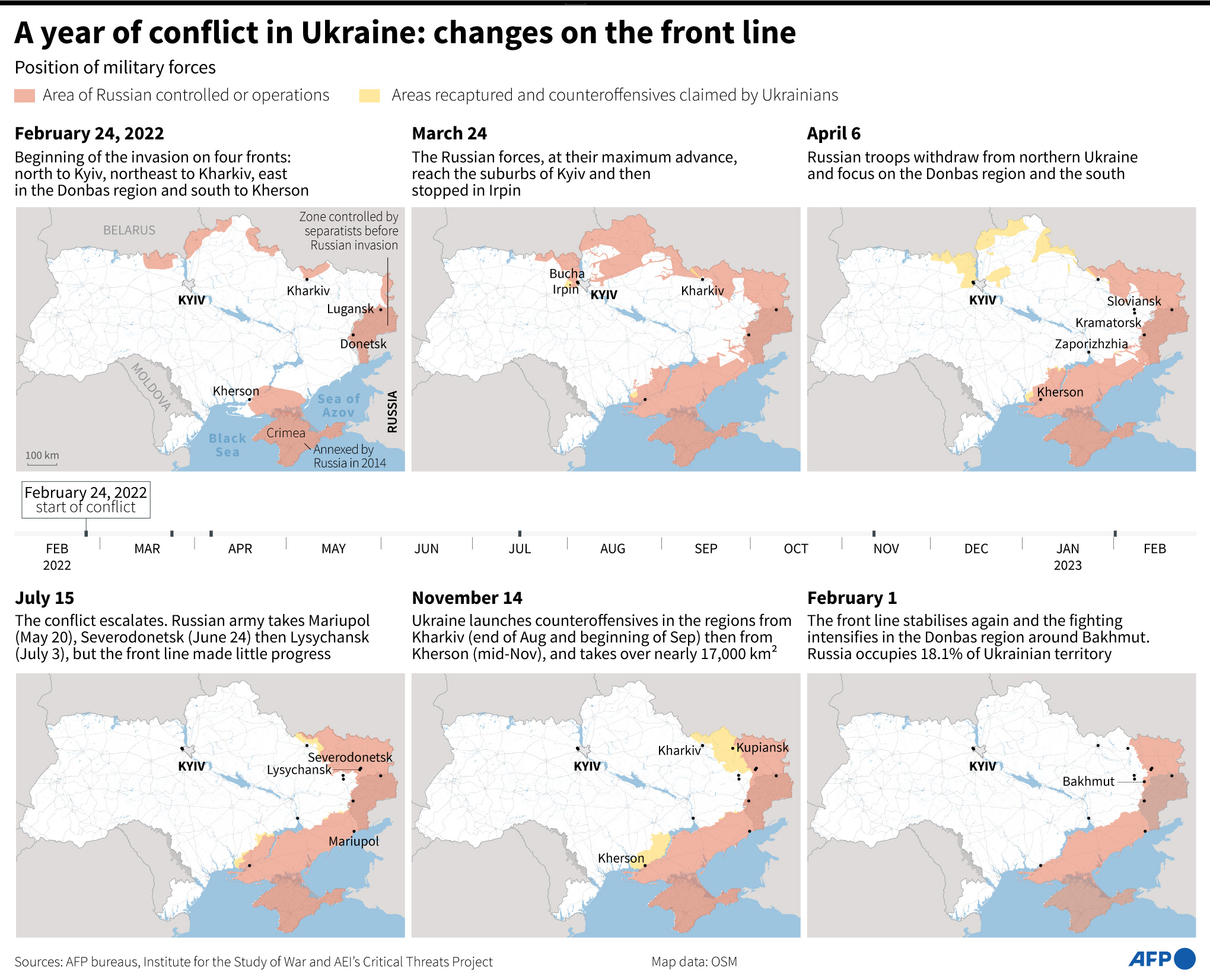Inside AFP
Ukraine - a year of unprecedented coverage by AFP
Exactly one year ago, AFP reported live from Kyiv’s central Maidan Square that the Russian offensive had begun against Ukraine. Since then, the agency has deployed unprecedented resources to cover this war in the heart of Europe and its consequences for the daily lives of Ukrainians, Russians and people in the rest of the world.

Almost 100 combined text, photo and video missions have been sent to Ukraine since the start of the war to support the agency’s local network of text and image journalists, which has been rapidly strengthened as the war developed.
AFP journalists have been sent to the cities, frontlines and countryside to cover all aspects of the war. These war zones include in the east, where the most violent fighting has been taking place, in Kherson in the south, Lviv in the West and in the capital itself, Kyiv. AFP has also maintained a large presence in Moscow where some 20 journalists continue to cover the Russian side of the conflict.
“The enormous resources deployed by AFP to cover this conflict reflect our daily commitment to informing the public throughout the world”, the agency’s global news director Phil Chetwynd said. “This is our mission of general interest. It is through a conflict of this magnitude that the agency, thanks to its unrivalled global network, shows the importance of its existence . It is our responsibility to continue this effort for as long as necessary.”
While editorial priority was given to breaking news coverage, AFP also deployed considerable resources to tell the story of the impact of the war on Ukrainians in text, images, video and graphics through hundreds of feature stories. It also reported on the refugee crisis that was triggered in the rest of Europe, and it illustrated the global repercussions of the conflict, the economic fallout, to food shortage in Africa and energy supplies in Asia.
The war led the agency to radically change its editorial organisation for Ukraine and Russia. “We created a dedicated rear base outside of the conflict zone in Warsaw with a team of around 10 Ukrainian and Russian speaking staff to monitor events and help handle the coverage”, said AFP’s Europe director Christine Buhagiar.
This exceptional effort led to the unprecedented use of AFP content in the world’s media. AFP videos were used more than 1.5 million times in the space of a year, while many photos became emblematic of the war.
The conflict also saw AFP’s journalists on the ground working closely with its digital investigation teams. This was particularly the case in the Ukrainian town of Bucha, where AFP first reported the deaths of dozens of civilians whose bodies were found lying in the open on April 4. Painstaking reporting on the ground combined with the digital verification team’s forensic examination of images, including from satellites, enabled AFP to show the truth in the face of an avalanche of disinformation over what happened.
The digital verification team published more than 1,230 fact-checks in 24 languages in 2022 about the war in Ukraine.
Since February 24, 2022, the innovation and graphics department has produced 5,644 graphics and videographics in six languages that have highlighted the evolution of this conflict and its consequences in all sectors.

